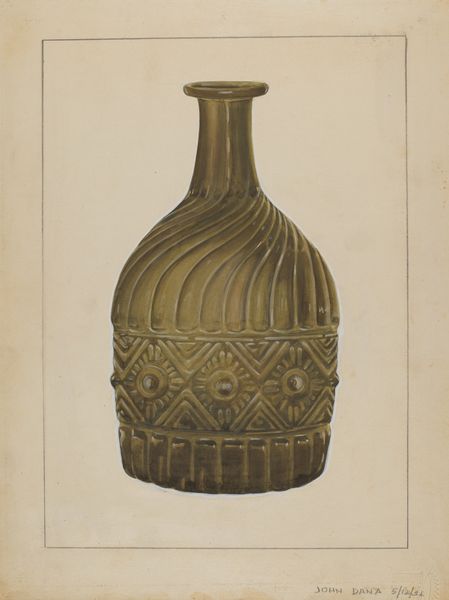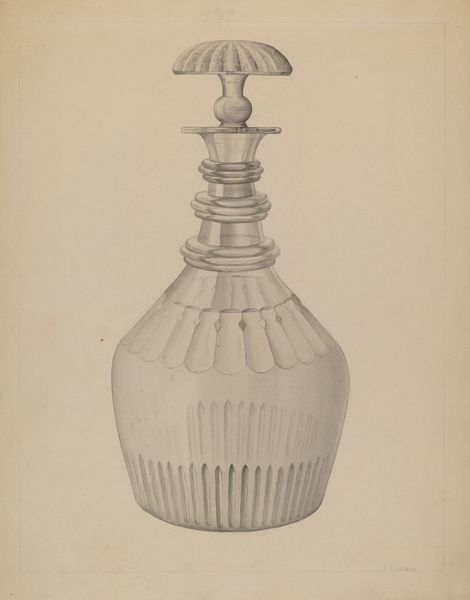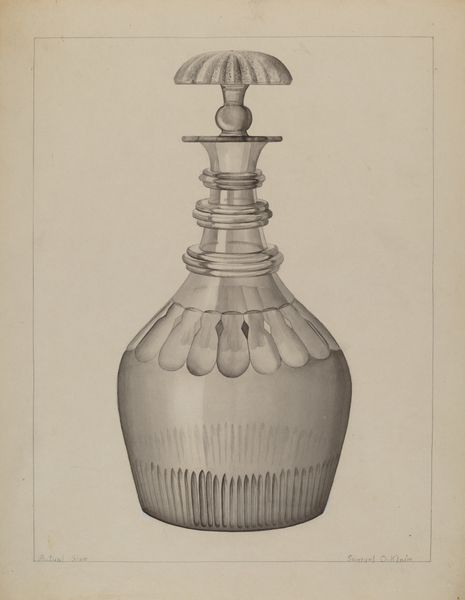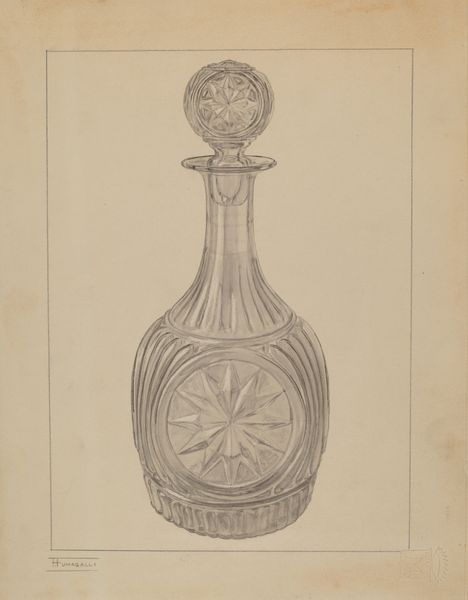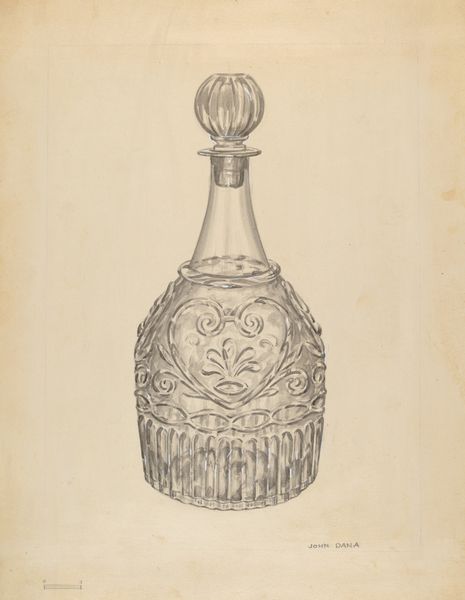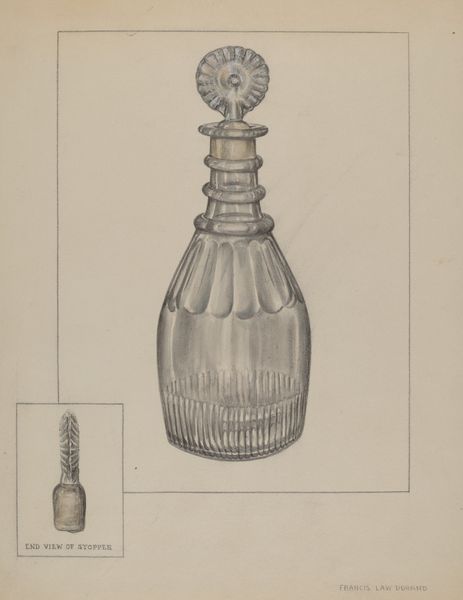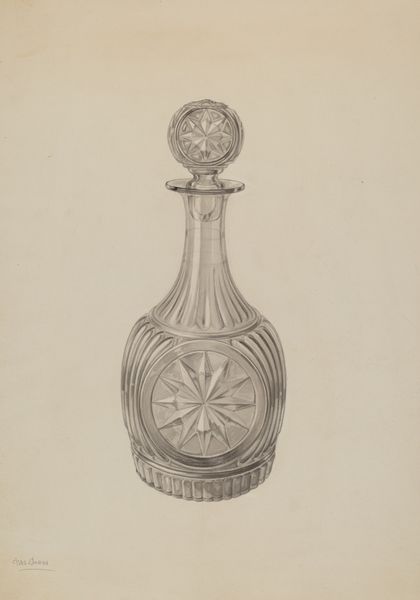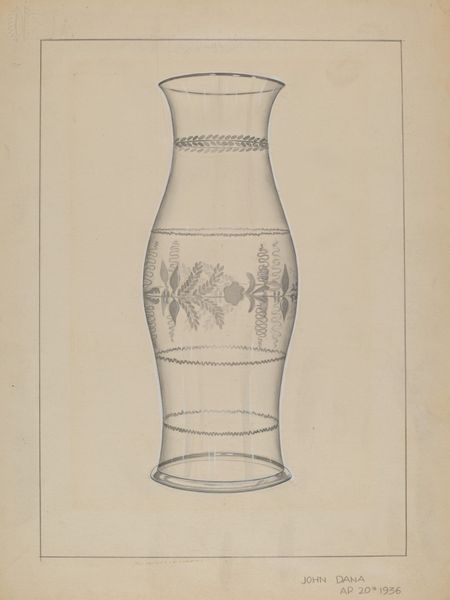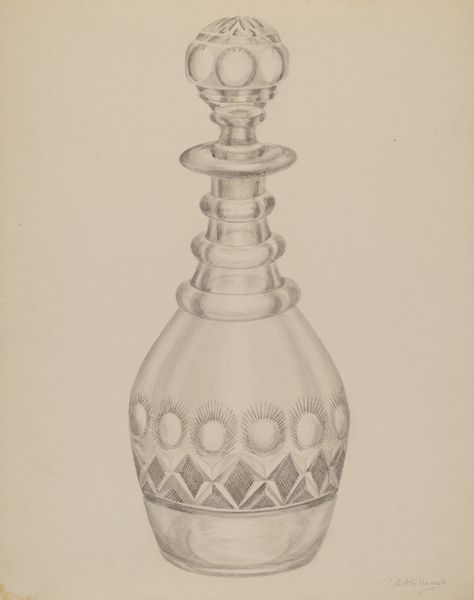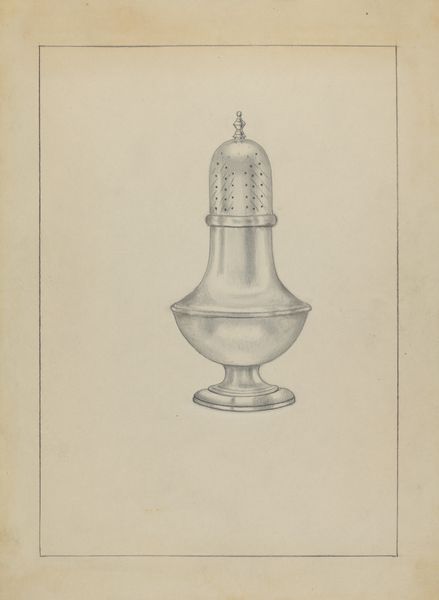
drawing, pencil
#
drawing
#
pencil drawing
#
pencil
#
realism
Dimensions: overall: 30.2 x 22.6 cm (11 7/8 x 8 7/8 in.)
Copyright: National Gallery of Art: CC0 1.0
Editor: Here we have John Dana’s “Decanter,” made around 1937 with pencil on paper. It’s surprisingly captivating for what seems like just a sketch of a bottle, kind of gives off an eerie vibe. What do you see in this piece? Curator: On the surface, it's a beautiful study of light and form, a demonstration of realist skill. But I wonder if we can push beyond the formal qualities. What does it mean to represent a vessel so explicitly associated with alcohol consumption, especially during the late Depression era when anxieties surrounding class, escape, and even morality were high? Editor: I never thought about it that way! So, the simple act of drawing a brandy decanter can be seen as…political? Curator: Potentially. Objects never exist in a vacuum. Consider the historical moment. Was Dana celebrating access and abundance during scarcity, or perhaps critiquing the escapism that alcohol provided? It is, after all, a luxury item in the midst of widespread economic hardship. Who has access to "Brandy," and what does that symbolize? Editor: It makes you wonder if there’s a message hidden beneath the surface. Is Dana trying to make us think about who gets to enjoy these luxuries? Curator: Precisely. And further, what are the gendered implications? In this era, alcohol consumption, especially in domestic settings, can be linked to historical inequalities and even abuse. Editor: Wow, you’ve given me a lot to think about. I will never look at still life the same way again. Curator: Art invites questions, not just pretty pictures! Hopefully, we can continue looking critically at these narratives.
Comments
No comments
Be the first to comment and join the conversation on the ultimate creative platform.

